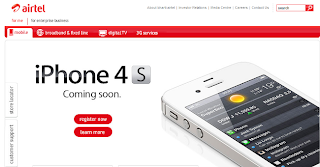Facebook agreed to tighten its privacy policies in order to settle charges that it abused users' personal data, the US Federal Trade Commission said Tuesday.
The social networking giant pledged to strengthen customer consent rules on privacy and to shut down all access to accounts deleted by customers in 30 days or less, the FTC said.
Facebook did not admit guilt and was not fined amid charges it shared user information with advertisers and other third parties when users had been told their data was protected.
Facebook was barred from "making any further deceptive privacy claims" and ordered to regularly undergo a third party audit to ensure it is keeping its promises.
"The proposed settlement requires Facebook to take several steps to make sure it lives up to its promises in the future," the FTC said in a statement.
That includes giving consumers "clear and prominent notice and obtaining consumers' express consent before their information is shared beyond the privacy settings they have established."
Facebook founder and chief executive Mark Zuckerberg said in a statement to users on his own Facebook page that the company had already implemented the promises it had made in the deal with the FTC.
"We're making a clear and formal long-term commitment to do the things we've always tried to do and planned to keep doing -- giving you tools to control who can see your information and then making sure only those people you intend can see it."
The settlement came amid reports that the company was preparing to go public as early as April next year.
The social networking giant pledged to strengthen customer consent rules on privacy and to shut down all access to accounts deleted by customers in 30 days or less, the FTC said.
Facebook did not admit guilt and was not fined amid charges it shared user information with advertisers and other third parties when users had been told their data was protected.
Facebook was barred from "making any further deceptive privacy claims" and ordered to regularly undergo a third party audit to ensure it is keeping its promises.
"The proposed settlement requires Facebook to take several steps to make sure it lives up to its promises in the future," the FTC said in a statement.
That includes giving consumers "clear and prominent notice and obtaining consumers' express consent before their information is shared beyond the privacy settings they have established."
Facebook founder and chief executive Mark Zuckerberg said in a statement to users on his own Facebook page that the company had already implemented the promises it had made in the deal with the FTC.
"We're making a clear and formal long-term commitment to do the things we've always tried to do and planned to keep doing -- giving you tools to control who can see your information and then making sure only those people you intend can see it."
The settlement came amid reports that the company was preparing to go public as early as April next year.





























